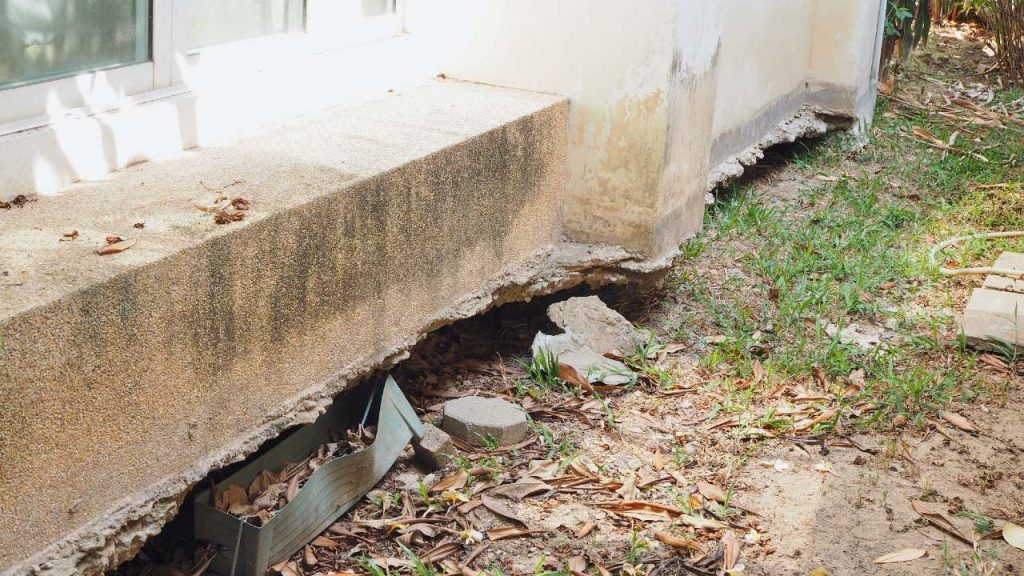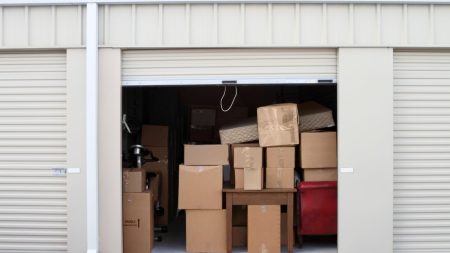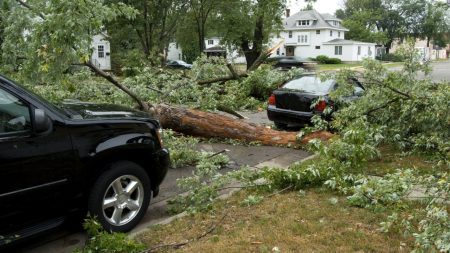Our writers and editors used an in-house natural language generation platform to assist with portions of this article, allowing them to focus on adding information that is uniquely helpful. The article was reviewed, fact-checked and edited by our editorial staff prior to publication.
Key takeaways
- Home insurance typically covers foundation issues caused by covered perils, such as fire.
- Exclusions to coverage may include wear and tear, neglect, faulty construction and settling or expansion of soil.
- It is important for homeowners to maintain their soil and grading and address any cracks or warning signs of foundation damage promptly.
- Standard home insurance policies do not cover foundation damage caused by floods or earthquakes, which may require separate insurance policies.
A solid foundation is essential for a safe and stable home. However, various factors such as construction defects, shifting soil, tree root growth and aging materials may cause foundation damage over time. This can be a major concern for homeowners, as foundation issues could lead to costly repairs and lower property values.
Fortunately, home insurance covers foundation repair when the damage is caused by a covered peril, such as fire or weather damage. However, there are some situations where home insurance does not cover foundations. Knowing what types of foundation damage your home insurance will cover is important and may help you avoid foundation damage in the first place.
Does home insurance cover foundation repair?
Your home insurance policy will typically cover foundation damage that occurs from a covered homeowners insurance peril. However, home insurance does not cover foundation repair when the damage is caused by a peril that is excluded from the policy. Whether insurance covers foundation issues will depend on the type of homeowners insurance you have, your home insurance provider, the policy exclusions and the proximate cause of the damage.
Bankrate insights
What foundation issues does home insurance cover?
Standard home insurance policies include dwelling coverage, which is the portion of your policy that covers the physical structure of your home, attached structures and your foundation. HO-3 and HO-5 insurance policies (the most common types of coverage) provide dwelling coverage on an open perils basis, which means any loss that is not explicitly excluded from your policy is covered.
In most cases, foundation repair is covered by insurance when the damage is caused by the following perils:
- Fire
- Windstorms and tornadoes
- A vehicle or aircraft
- Vandalism
- Falling objects
- Water damage that results from an overflow in your A/C, heating or plumbing system
- Explosions
However, reading through your policy is important to determine which perils are included in your insurance policy and how much you’re required to pay out of pocket. Depending on where you live, you may have a percentage-based windstorm deductible or a standalone windstorm insurance policy. In some places, foundation repair is not covered by insurance when the damage is caused by windstorms or wildfires. This is more common in areas prone to those types of catastrophic losses, like Florida or California.
When does a standard home insurance policy not cover foundation damage?
Although home insurance does cover many sources of foundation damage, there are certain situations where coverage might be denied. For instance, some people assume that foundation damage is covered after any natural disaster. But that’s not the case.
In fact, almost all home policies specifically exclude two of the natural disasters that can do the most foundation damage: floods and earthquakes. If you live in an area where earthquakes or floods are common, speak with an agent to see if purchasing a separate earthquake or flood insurance policy would provide better financial protection for the investment you’ve made in your home.
Most home insurance policies only provide coverage for “sudden and accidental loss” or “direct physical loss,” which is defined as damage caused by an accident or other unexpected event that is out of your control. Standard policy exclusions pertaining to foundation issues typically include:
- Wear and tear
- Neglect
- Faulty construction
- Birds, vermin, rodents, insects or animals kept by an insured party
- Settling, shrinking, bulging or expansion
Settling, shrinking, bulging or expansion
While some settling of a home is normal, especially if it is new construction, extreme settling, shrinking, bulging or expansion will cause your foundation to crack. Too much moisture can lead to soil expansion, putting pressure on your foundation, while too little moisture can cause soil shrinkage, which can lead to foundation settling or cracking. Routine home maintenance and landscaping can drastically reduce the likelihood of this happening, which is why insurers commonly deny foundation claims associated with this type of damage.
To maintain optimal moisture levels, consider watering your foundation during dry seasons and ensuring that your home has good drainage systems, such as gutters and downspouts, to keep water away from it. If you live in an area experiencing a drought, check with your local city officials on ways you can maintain your yard in accordance with mandated water restrictions.
Bankrate insights
Policy exclusions are listed in your home policy contract, which is typically about 20 to 30 pages. To locate exclusions related to your home’s foundation, check the policy index for Section I exclusions. Section I is the property coverages portion of your policy, whereas Section II pertains to personal liability. If you have a digital copy of your policy, do a simple keyword search for the word “foundation” to discover where your insurance specifically mentions how and if your foundation is covered from loss.
What to do if you experience foundation damage
If your home’s foundation is damaged in a covered peril, you should get in touch with your insurer or agent as quickly as possible to file a claim.
You may want to take photos and videos to document the damage when it’s safe to do so, submit them to your assigned claims adjuster and keep a copy for your own records. After filing the claim, your insurance company will likely send a field adjuster to your property to assess the damage in person. They will then write an itemized claim report detailing the loss and what your policy will cover.
Like any other insurance claim, filing a successful homeowners foundation claim comes down to meeting your insurer’s requirements. Don’t hesitate to ask them questions if you’re unsure about any steps.
To help you with the process, many insurers have a network of preferred contractors. And some even guarantee the workmanship for a set period of time when you choose one of their contractors. Some major insurers that offer this service include:
How to prevent foundation damage
While catastrophic losses are unavoidable, there are ways to safeguard your foundation and reduce the risk of loss from preventable damage. Here are some tips for preventing homeowners foundation issues:
- Get a home inspection before moving in: Before buying your home, you should get a home inspection from a qualified inspector. The inspection should include a careful look at your foundation so you will have a better idea of any problems you might face after the sale (or whether you should back out of the deal).
- Maintain your soil: The soil near your home should be neither too wet nor too dry — both can strain the foundation. During drought-like conditions, it may be helpful to water the soil thoroughly with a hose.
- Check your grading: You want water to drain away from your home when it rains. Aim to have at least 6 inches of grading away from your house in the 10 feet surrounding it.
- Mind your trees: Any trees that are too close to your home should be cut down or moved to prevent the roots from putting stress on the foundation. A good general rule is to allow one foot of space for roots for each inch of trunk thickness. So a tree with a trunk that is 6 inches in diameter should be at least 6 feet away from your foundation.
- Clean your gutters: Clogged gutters can lead to water spilling over the edge and directly onto the soil surrounding your foundation. Keeping your gutters clear of leaves and debris can protect your foundation from moisture-related issues.
- Lay some mulch: Mulch can be used around your house to maintain the moisture level and temperature of the surrounding soil, minimizing pressure on your foundation. Note that wood mulch should be kept at least 6 inches from the foundation or perimeter of your home to prevent termite damage.
- Address cracks promptly: If you notice any cracks in your foundation, don’t wait to get a professional out to assess the severity of the issue. Acting fast can minimize the damage — and the cost of repairing it.
Foundation damage warning signs
Any of these warning signs could indicate you have foundation damage and warrant further investigation by a licensed professional to avoid further damage to your home:
- Cracks: Cracks in the home’s interior sheetrock, chimney, tiles or home exterior can mean the foundation is cracked, especially if the cracks are horizontal or zig zagged. If the cracks grow or become longer, it could mean the foundation cracks are worsening.
- A wet crawl space: This could indicate a crumbling or cracked foundation. If an area is easily flooded, or if a pier and beam foundation is poorly sealed, water can get into the crawl space and cause water damage to a home. Water in a cracked foundation can further weaken an already damaged foundation.
- Crumbling of the foundation: This could mean a slow deterioration of the concrete and an eventual failed foundation. The appearance may present a rust-colored residue or a white powder may appear.
- Shifting: If walls, floors, ceilings or support posts are warped or leaning, you can use a leveling device to see if they are level. Another indication may be that doors and windows don’t fit properly (for example, they stick when you try to open them, or don’t latch properly anymore). The foundation of the house may be settling or sinking, the concrete on the poured perimeter foundation could be chipping or flaking, counters and cabinets may separate from the wall or nails may pop out of the drywall.
- Bugs: If there are sightings of bugs, this could also mean that there are cracks in the foundation or gaps where the insects can enter the home.
If you notice any foundation issues, it’s important to address the problem quickly. Ignoring foundation problems can lead to major structural problems for your home, and sagging floors can even become dangerous.
Foundation repairs require flooring to be removed so a contractor can dig underneath it to make the repair. The more cracks there are, the more flooring has to be removed, and the more extensive (and expensive) the repair becomes. So, the longer the problem is ignored, the worse it may be.
Also, keep in mind that while insurance covers foundation issues, the repairs may not be covered if your insurance company determines that the problem is pre-existing and you didn’t attempt to fix it before it got worse.
Frequently asked questions
-
-
Tree root growth can potentially cause foundation problems. As tree roots grow, they can push against your foundation, causing it to crack or shift. To prevent this, avoid planting large trees too close to your home. If you have existing trees near your foundation, consider having the roots trimmed regularly by a licensed tree expert. Also, keep an eye on any cracks or shifts in your foundation that could indicate damage from tree roots.
-
According to Home Advisor, the average cost of a foundation repair ranges from $2,187 to $7,872. But the cost of foundation repairs can range widely depending on the extent of the damage and the type of repair needed. Minor repairs, such as fixing small cracks, may cost a few hundred dollars. However, more extensive repairs, such as fixing major cracks or shifting, can cost several thousand dollars. If the foundation has severe damage, you may need to replace it completely — and this can cost tens of thousands of dollars.
-
If you are in the market to buy a home, pay attention to each property’s foundation before submitting an offer. Consulting a contractor or licensed home inspector can help you get a good sense of the foundation’s condition before committing. Look out for cracks around the home’s exterior, sheetrock or chimney and scan the foundation carefully to check for crumbling, water damage, or bugs. All are warning signs that there could be bigger issues.
-
Recognizing the early signs of foundation damage can help you take action before the damage becomes severe. Some common warning signs include cracks appearing in walls or floors, doors or windows that no longer close properly, uneven or sloping floors, and gaps around window frames or exterior doors. If you notice any of these signs, it’s a good idea to have your foundation inspected by a licensed professional as soon as possible.
-
Read the full article here
















